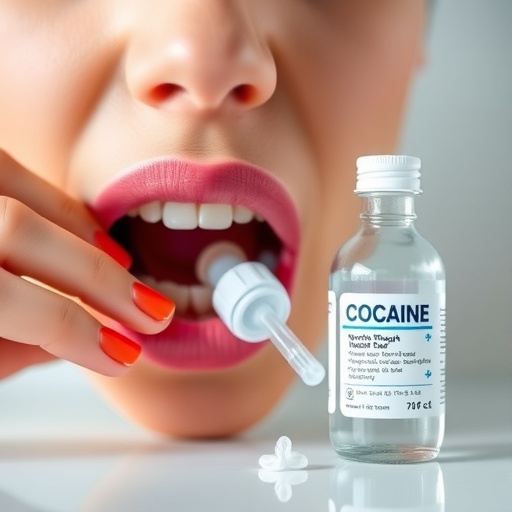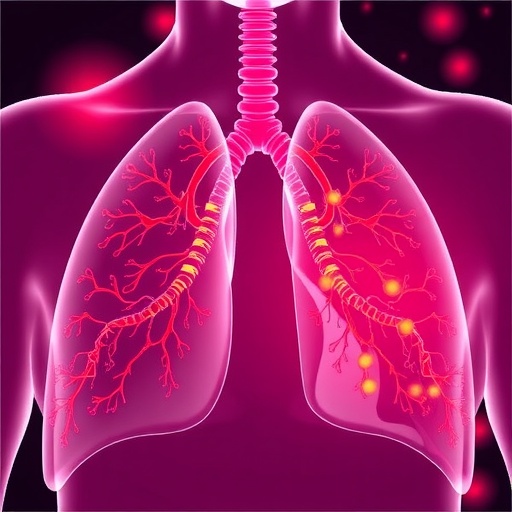In recent years, mucositis has emerged as one of the most daunting complications faced by patients undergoing radiotherapy or chemoradiotherapy for head and neck cancer (HNC). This debilitating condition, characterized by painful inflammation and ulceration of the oral mucosa, not only hampers patients’ ability to eat and speak but also dramatically diminishes their quality of life (QoL) during treatment. Despite numerous interventions put forth to alleviate its severity, effective and widely accepted therapeutic options remain elusive. A groundbreaking two-phase study published in BMC Cancer now explores an unconventional agent—0.5% cocaine mouthwash (CMW)—as a potential adjunct to the institutional standard of care (SOC) in managing mucositis among HNC patients undergoing radiotherapy or chemoradiotherapy.
The motivation behind investigating cocaine mouthwash stems from its known local anesthetic and vasoconstrictive properties, which theoretically could provide symptomatic relief from mucosal pain and reduce inflammation. However, until now, clinical evidence regarding its safety and efficacy in this specific clinical setting has been severely limited. The study in question, conducted at a single center with a prospective sequential cohort design, sought to bridge this gap by rigorously assessing whether the addition of 0.5% CMW to SOC would translate into tangible benefits in patient-reported QoL outcomes.
The study enrolled 137 eligible HNC patients scheduled for curative-intent radiotherapy or chemoradiotherapy. Of these, 64 patients received SOC alone, while a comparable cohort of 64 patients received SOC supplemented with the 0.5% cocaine mouthwash. Both groups were matched closely with respect to baseline characteristics, including age, gender distribution, tumor site, and stage, ensuring that any differences in outcomes could be reasonably attributed to the intervention itself. The majority of participants were male (84%), reflecting the epidemiology of head and neck cancers worldwide.
Radiation dosing was consistent across groups, with about 71% of patients receiving a total radiation dose of 70 Gy, administered in standard fractionation protocols that are well-established in current oncologic practice. Additionally, concurrent systemic therapy was given to approximately 74% of patients, underscoring the complex multimodal approach often necessary in treating advanced HNC. Importantly, the researchers utilized validated European Organization for Research and Treatment of Cancer (EORTC) QoL questionnaires—specifically the QLQ-C30 and its head and neck cancer module H&N35—to systematically quantify patients’ quality of life at multiple timepoints including baseline, during treatment, and at one and three months post-therapy.
One of the salient findings of this comprehensive investigation was that up to 69% of patients experienced grade 2 or 3 mucositis, a level of severity that typically necessitates intensive symptom management and has been known to impair treatment adherence. Up to 78% of participants required opioid analgesics during their treatment course, highlighting the substantial pain burden imposed by mucositis. Despite this, the study revealed no consistent or clinically meaningful differences in the incidence or severity of mucositis-related morbidity between the SOC and SOC plus 0.5% CMW groups.
Hospitalization rates were notably high in both cohorts, with nearly half (49%) of all patients requiring admission for supportive care. Similarly, a significant proportion (29%) necessitated enterostomy feeding due to inability to maintain adequate oral intake—a severe manifestation of treatment toxicity. Importantly, these outcomes were comparable between the arms, emphasizing the persistent clinical challenge posed by mucositis despite the intervention. The addition of cocaine mouthwash did not confer any statistically significant reduction in hospitalizations, nor did it impact the need for alternative feeding strategies.
Intriguingly, the analysis showed that a significantly greater percentage of patients in the SOC-only group experienced weight changes exceeding 5% from baseline to three months post-treatment (56.3% versus 40.6%, p=0.024). This finding suggests some potential indirect nutritional benefit from the cocaine mouthwash, though the clinical significance remains ambiguous given the absence of corroborating differences in other key clinical endpoints. Moreover, opioid analgesia prescription rates did not differ consistently between the groups, indicating that pain control requirements remained largely unaffected by the addition of CMW.
From the patient-reported quality of life standpoint, the study provided a thorough examination using both adjusted and unadjusted analyses. Surprisingly, neither approach demonstrated meaningful improvements attributable to cocaine mouthwash when benchmarked against a 10-point clinically relevant difference threshold. These findings underscore a critical reality: despite promising mechanistic rationale, the symptomatic relief from 0.5% CMW may not translate into perceivable enhancements in overall quality of life during or after CRT in patients afflicted with mucositis.
The implications of these results are multifaceted. On one hand, the study affirms the formidable morbidity burden encountered by HNC patients secondary to mucositis, highlighting ongoing unmet needs in supportive care. On the other hand, it cautions against empirical or widespread adoption of cocaine mouthwash as an adjunct without robust evidence of benefit. Importantly, no safety concerns or harm related to cocaine mouthwash administration were detected, providing some reassurance regarding its tolerability in this vulnerable population.
These comprehensive findings contribute valuable evidence to the evolving therapeutic landscape of mucositis management. They serve as both a call to action for continued research and innovation and a reminder of the complexities inherent in translating pharmacologic mechanisms into patient-centered outcomes. Clinicians, researchers, and policymakers should interpret this study within the broader context of supportive oncology care, balancing innovation with rigorously validated clinical endpoints.
The study was retrospectively registered with the Australian New Zealand Clinical Trials Registry under ACTRN12625000158460, ensuring transparency and adherence to clinical research standards. This formal registration enhances credibility and facilitates meta-analytic incorporation of the results within the growing body of literature investigating mucositis interventions.
In summary, the rigorous two-phase clinical evaluation conducted by Grover, Tang, Jacques, and colleagues presents real-world evidence that the addition of a 0.5% cocaine mouthwash to standard mucositis care regimens does not improve patient-reported quality of life for head and neck cancer patients undergoing radiotherapy or chemoradiotherapy. Despite mechanistic plausibility, the intervention failed to alleviate mucositis severity or reduce opioid requirements meaningfully. The study thus underscores the complexity of mucositis management and the need for continued exploration into more effective supportive care modalities to mitigate this onerous side effect of life-saving anticancer therapies.
As research in this domain continues, future studies may investigate novel formulations, combination therapies, or alternative delivery methods aimed at modulating mucosal injury and fostering recovery. The challenge remains to identify strategies that not only target the biological underpinnings of mucositis but also translate into palpable, patient-centered relief that can withstand the rigor of clinical evaluation.
Subject of Research:
Investigation of the quality of life benefit of adding 0.5% cocaine mouthwash to standard care mucositis management in head and neck cancer patients undergoing radiotherapy or chemoradiotherapy.
Article Title:
A two-phase study investigating the quality of life benefit of additional 0.5% cocaine mouthwash to institutional standard of care mucositis management in head and neck cancer patients undergoing radiotherapy or chemoradiotherapy.
Article References:
Grover, P., Tang, C., Jacques, A. et al. A two-phase study investigating the quality of life benefit of additional 0.5% cocaine mouthwash to institutional standard of care mucositis management in head and neck cancer patients undergoing radiotherapy or chemoradiotherapy. BMC Cancer 25, 1551 (2025). https://doi.org/10.1186/s12885-025-14955-7
Image Credits:
Scienmag.com
DOI:
https://doi.org/10.1186/s12885-025-14955-7
Tags: adjunct therapies for mucositischemotherapy complications and solutionsclinical study on cocaine mouthwashcocaine mouthwash for mucositishead and neck cancer treatmentinnovative treatments for mucositislocal anesthetics in oncologymucositis management strategiesoral mucosa inflammation reliefpain management in cancer careQuality of Life in Cancer Patientsradiotherapy side effects





